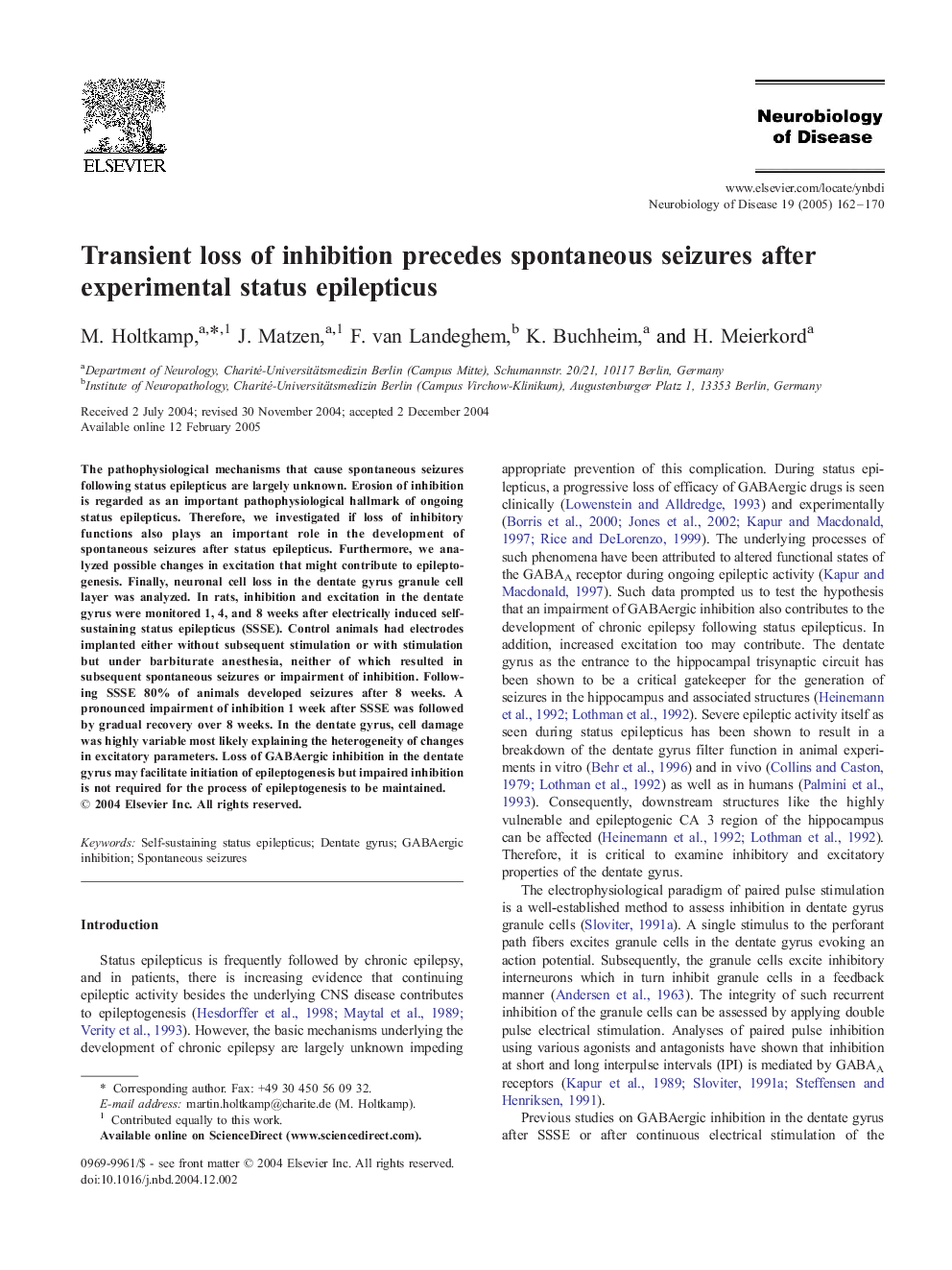| Article ID | Journal | Published Year | Pages | File Type |
|---|---|---|---|---|
| 9989723 | Neurobiology of Disease | 2005 | 9 Pages |
Abstract
The pathophysiological mechanisms that cause spontaneous seizures following status epilepticus are largely unknown. Erosion of inhibition is regarded as an important pathophysiological hallmark of ongoing status epilepticus. Therefore, we investigated if loss of inhibitory functions also plays an important role in the development of spontaneous seizures after status epilepticus. Furthermore, we analyzed possible changes in excitation that might contribute to epileptogenesis. Finally, neuronal cell loss in the dentate gyrus granule cell layer was analyzed. In rats, inhibition and excitation in the dentate gyrus were monitored 1, 4, and 8 weeks after electrically induced self-sustaining status epilepticus (SSSE). Control animals had electrodes implanted either without subsequent stimulation or with stimulation but under barbiturate anesthesia, neither of which resulted in subsequent spontaneous seizures or impairment of inhibition. Following SSSE 80% of animals developed seizures after 8 weeks. A pronounced impairment of inhibition 1 week after SSSE was followed by gradual recovery over 8 weeks. In the dentate gyrus, cell damage was highly variable most likely explaining the heterogeneity of changes in excitatory parameters. Loss of GABAergic inhibition in the dentate gyrus may facilitate initiation of epileptogenesis but impaired inhibition is not required for the process of epileptogenesis to be maintained.
Related Topics
Life Sciences
Neuroscience
Neurology
Authors
M. Holtkamp, J. Matzen, F. van Landeghem, K. Buchheim, H. Meierkord,
